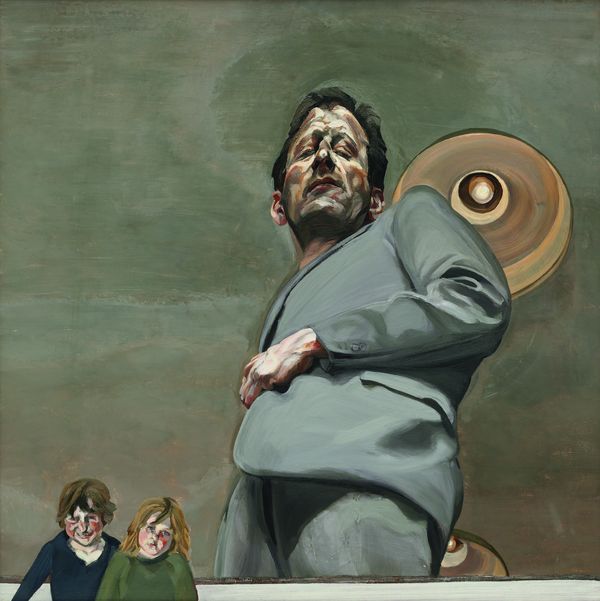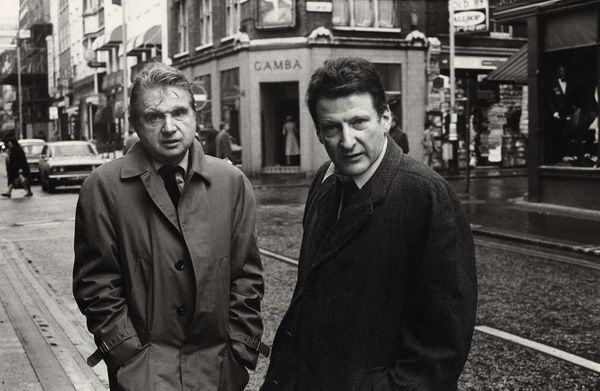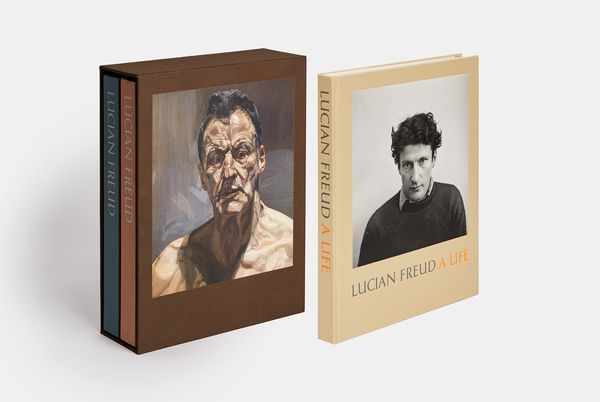Lucian Freud Reflection with Two Children (Self-portrait), 1965. © The Lucian Freud Archive / Bridgeman Images; photography by John Riddy
Renowned for his unflinching observations, Lucian Freud is considered one of the great figurative artists. He pushed the boundaries of decorum in classical portraiture, exploring his lifelong desire to honestly render the human figure. Lucian was the grandson of Sigmund Freud, the pioneer of psychoanalysis. Born in Berlin on 8 December 1922 and dying in London on 20 July 2011, Freud had lived in Britain since 1933. Our partners at Phaidon caught up with David Dawson, assistant to Freud for the last twenty years of his life, model and now Director of the Lucian Freud Archive, to talk about life with Lucian, following the recent publication of his new book, Lucian Freud: A Life.
PHAIDON: Who do you think was the biggest artistic influence on Freud?
DAVID DAWSON: I think Francis Bacon was the biggest influence on Lucian turning into a contemporary painter — in terms of how to be an artist, how to be a man and how to be a painter. I think he learned the most from Francis. Francis was ten or fifteen years older than Lucian and they saw each other every single day for a good decade.
By the time I met him they’d fallen out a bit and it had gone. But I do remember Lucian saying how Bacon always went on about the loaded paintbrush and how everything was in one mark. It really affected Lucian, that. And he worked out how he could do it in his language.
Francis Bacon and Lucian Freud, 1974. Picture credit: © National Portrait Gallery, London
P: How did you see his style change over the years?
DD: When he was young it was linear, very thinly painted, and then he met Francis Bacon who could make this amazing one gesture that was loaded in meaning. That’s what really captivated Lucian, because he could see that was where contemporary art really was, in that one particular idea — and it loosened up his paintbrushes!
P: Did Bacon influence Freud's process?
DD: He stopped sitting and painting a portrait with very fine brushes and began standing up and using hog hair brushes that were thicker and loaded up with more paint. It’s a slow process, but in the late 1950s and early '60s, you can really see the brush marks changing.
P: In what way?
DD: The feel of the skin over the bone was put into the gesture of the brush and I think that evolved from his interpretation of what Bacon was talking about. When I came to see him he was 70 so he was in his final mature years as a painter. The biggest thing was that the scale of his paintings had just jumped. And just having physically bigger canvases means you use a brush in a different way too.
Lucian Freud in the studio, 1978, with the unfinished portrait Rose, 1978–79. Picture credit: Courtesy Rose Boyt
P: Did he ever explain to you what he liked about large scale?
DD: I think he could just make more ambitious works. It’s just a physically different impact when there are 8 feet tall paintings in the room. But the remarkable thing about Lucian’s painting is that the same intensity is there in his small canvases and his
small portraits. When you walk into a room and there’s a small canvas, it really holds the room well. There are not many artists who can do that. And that’s the remarkable thing about his small paintings — from afar, they really stand out.
P: As well as Bacon, he was very close to Frank Auerbach too, wasn't he?
DD: Yes, Frank Auerbach was a close, close friend too, and as each painting neared completion, Lucian would ask Frank to come around and have a look at it. They were amazing together, Lucian and Frank — the great intellects of art history with all
that knowledge inside them. The level they pitched on was very high and always very witty. There was always so much depth behind what they were actually talking about. They were brilliant.
P: Can you remember any conversations in particular?
DD: Lucian had an amazing memory so he would recite all these funny limericks and great swathes of poetry. Frank Auerbach could do it as well. They would just recite poems aloud. Quite often when you were sitting for Lucian he would just recite a massive amount of 'The Rime of the Ancient Mariner'. And Shakespeare sonnets – he had a fantastic memory for poetry.
Learn more about Lucian Freud: A Life and Lucian Freud at Phaidon >
Learn more about Lucian Freud: The Self Portraits, sponsored by Phillips, at the Royal Academy >



